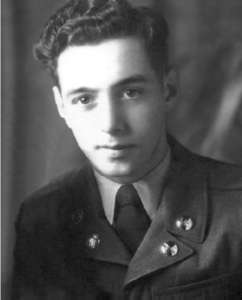Warren, T. P.
Army Sergeant
T. P. Warren, age 33, from Maryland, Hartford county.
Service era: Korea
Date of death: Thursday, November 2, 1950
Death details: During the last week of October 1950, Republic of Korea (ROK) Army forces under the control of the U.S. Eighth Army were advancing deep in North Korean territory, approaching the Yalu River on the Chinese-Korean border. Chinese Communist Forces (CCF) struck back in a surprise attack, engaging the ROK 1st and 6th Divisions near Unsan, some sixty miles north of Pyongyang. The U.S. 1st Cavalry Division, with the 8th Cavalry Regiment in the lead, was rushed forward to reinforce the ROK units in the Unsan area. On November 1, the regiment’s 1st Battalion took up positions north of Unsan, while the 2nd Battalion moved to guard the Nammyon River valley west of town, and the 3rd Battalion was placed in reserve at the valley’s southern end. Sergeant First Class T.P. Warren, who joined the U.S. Army from Maryland, was a member of Company B, 2nd Chemical Mortar Battalion. Three companies of the 2nd Chemical Mortar Battalion had been positioned near Unsan to provide support to the ROK infantry regiments in the area. After midnight on November 1, 1950, U.S. forces near the town were ordered to withdraw to avoid encirclement by the enemy. CCF roadblocks and constant small arms fire led to heavy casualties among the withdrawing men, and a firing platoon of Company B was caught behind enemy lines and overrun during the withdraw. Sergeant First Class Warren went missing in action during this moving battle. He was never reported as a prisoner of war, and he remains unaccounted for. Today, Sergeant First Class Warren is memorialized on the Courts of the Missing at the National Memorial Cemetery of the Pacific.
Source: National Archives, Defense POW/MIA Accounting Agency
 Death details: On July 5, 1950, Task Force Smith, the first U.S. ground element to engage North Korean People’s Army (NKPA) troops, was defending a position north of Osan, South Korea. The Task Force’s goal was to delay enemy forces by blocking their movement down the road south from Suwon to Taejon, which was a major avenue of advance for the NKPA. That morning, the Task Force was engaged by a column of enemy tanks. The anti-tank weapons that the infantrymen employed were ineffective, and a large number of tanks broke through their position. Task Force Smith was forced to withdraw to the south, suffering heavy casualties in the process. Sergeant Arthur Macon Jones, who joined the U.S. Army from Maryland, served with C Company, 1st Battalion, 21st Infantry Regiment, 24th Infantry Division. His unit was part of Task Force Smith, and he was captured by enemy forces on July 5, 1950, and marched to a temporary prison compound at Manpo, North Korea. After a brief rest, his group proceeded to the Apex prison camps near the Yalu River; however, SGT Jones was too weak to continue. His companions were forced to leave him, and it is believed that he died at Manpo on October 31. His remains were not identified among those returned to U.S. custody after the ceasefire. Today, Sergeant Jones is memorialized on the Courts of the Missing at the National Memorial Cemetery of the Pacific.
Death details: On July 5, 1950, Task Force Smith, the first U.S. ground element to engage North Korean People’s Army (NKPA) troops, was defending a position north of Osan, South Korea. The Task Force’s goal was to delay enemy forces by blocking their movement down the road south from Suwon to Taejon, which was a major avenue of advance for the NKPA. That morning, the Task Force was engaged by a column of enemy tanks. The anti-tank weapons that the infantrymen employed were ineffective, and a large number of tanks broke through their position. Task Force Smith was forced to withdraw to the south, suffering heavy casualties in the process. Sergeant Arthur Macon Jones, who joined the U.S. Army from Maryland, served with C Company, 1st Battalion, 21st Infantry Regiment, 24th Infantry Division. His unit was part of Task Force Smith, and he was captured by enemy forces on July 5, 1950, and marched to a temporary prison compound at Manpo, North Korea. After a brief rest, his group proceeded to the Apex prison camps near the Yalu River; however, SGT Jones was too weak to continue. His companions were forced to leave him, and it is believed that he died at Manpo on October 31. His remains were not identified among those returned to U.S. custody after the ceasefire. Today, Sergeant Jones is memorialized on the Courts of the Missing at the National Memorial Cemetery of the Pacific.